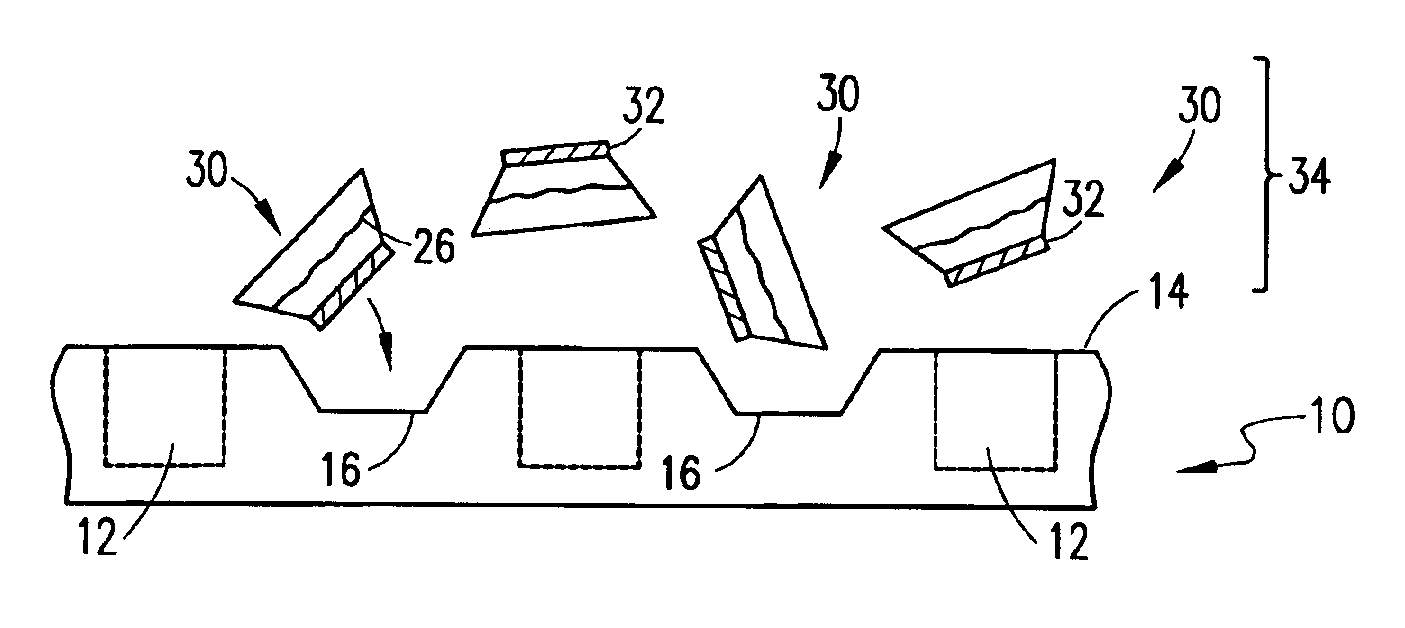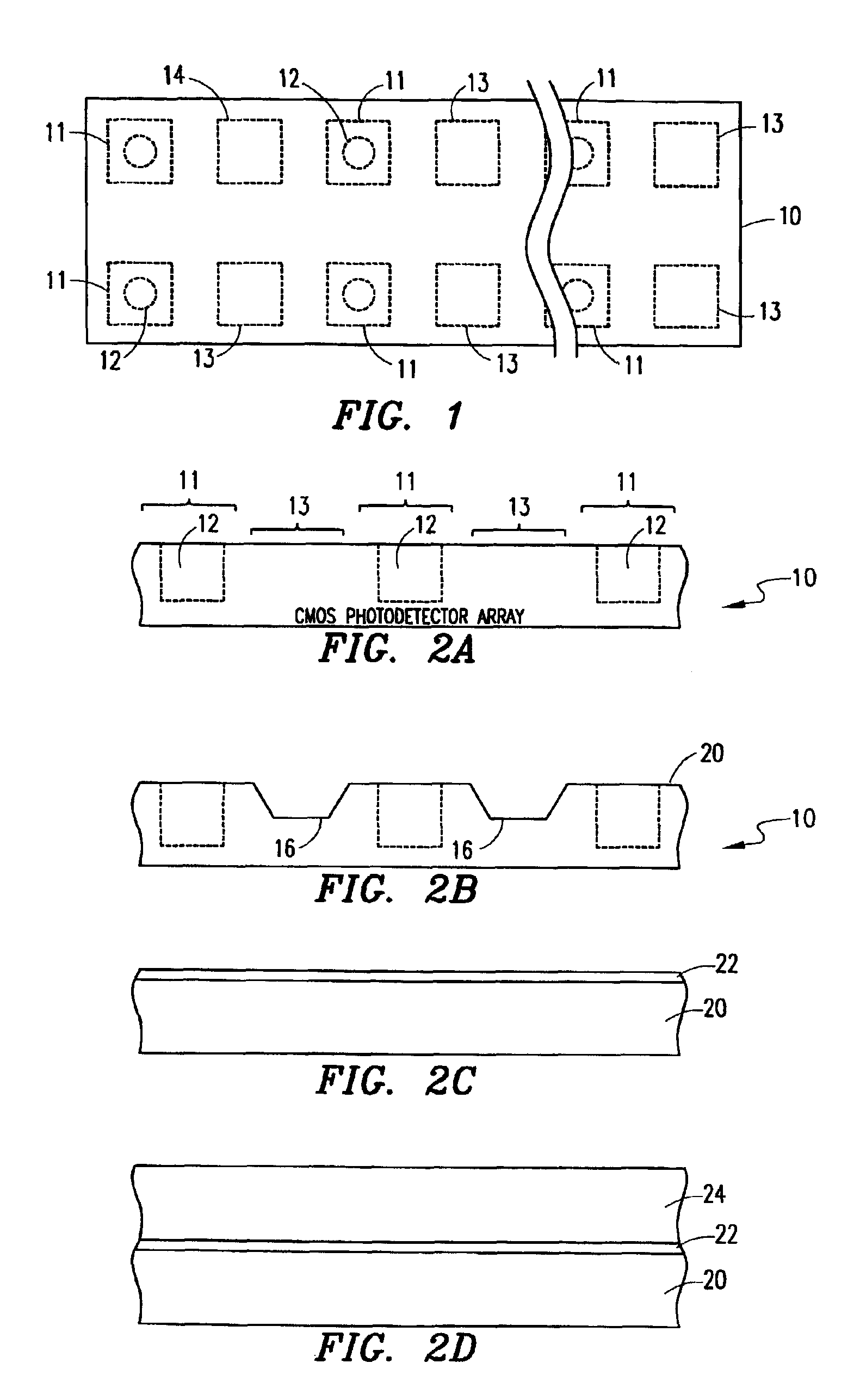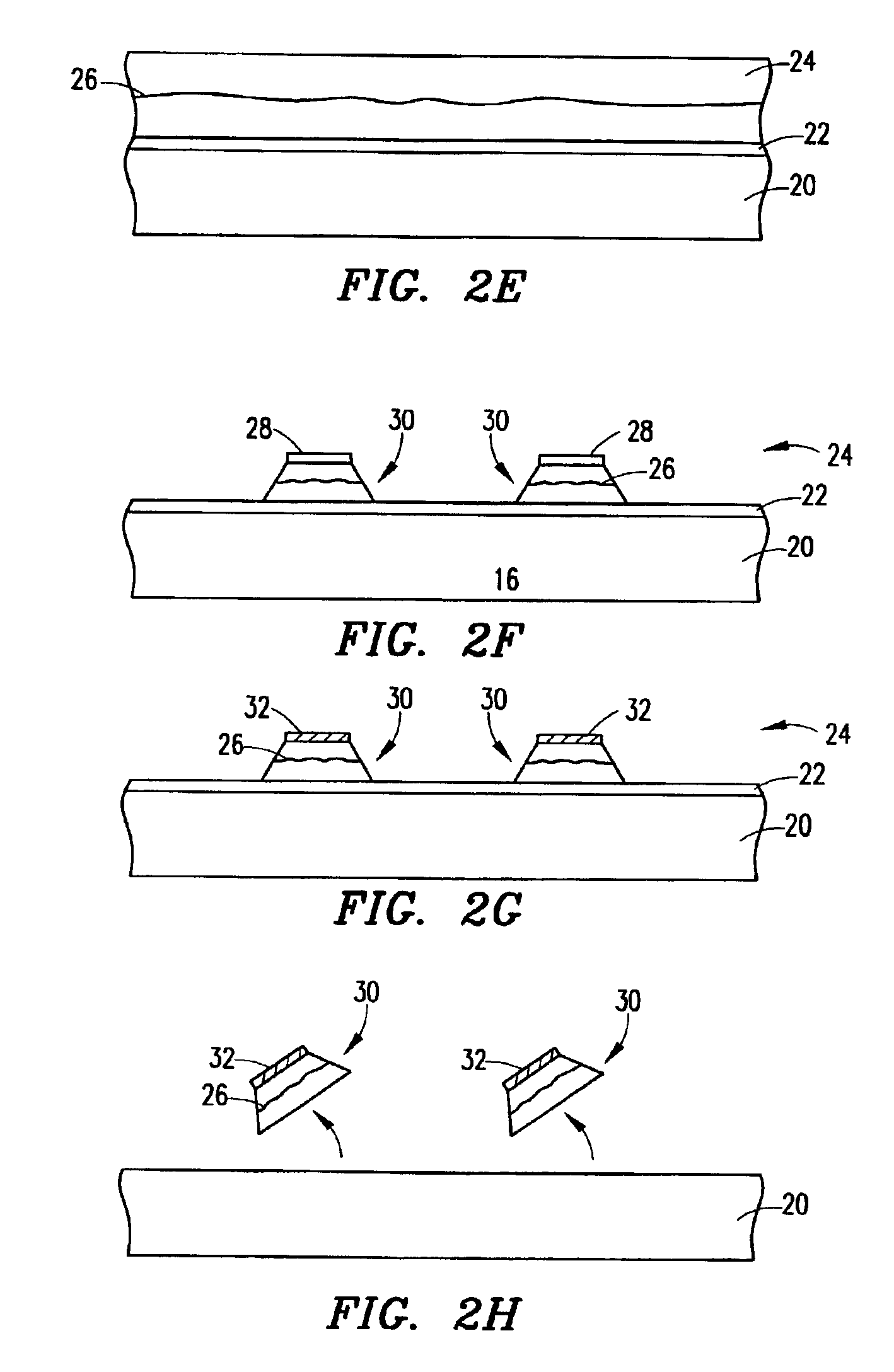Optical excitation/detection device and method for making same using fluidic self-assembly techniques
a technology of optical excitation/detection and fluid self-assembly, which is applied in the direction of material analysis, radiological control devices, instruments, etc., can solve the problems that standard solid-state light emitting devices (like leds) are difficult to incorporate onto a cmos detector array
- Summary
- Abstract
- Description
- Claims
- Application Information
AI Technical Summary
Benefits of technology
Problems solved by technology
Method used
Image
Examples
Embodiment Construction
[0012]Reference is now made to FIG. 1 wherein there is shown a top view of a complementary metal oxide semiconductor (CMOS) photodetector array 10. It will be recognized by those skilled in the art that the features illustrated in FIG. 1 are not necessarily drawn to scale and that the size of certain features, dimensions, and the like, may be exaggerated to ease illustration and understanding. The CMOS array 10 is fabricated using conventional complementary metal oxide semiconductor fabrication techniques and includes an arrayed plurality of photoreceptor areas 11 and an arrayed plurality of photoemitter areas 13. Within each photoreceptor area 11, the CMOS fabrication process is used to form an integrated photoreceptor 12 (also referred to as a photodiode). Examples of such photoreceptors 12 include p-i-n diodes, avalanche photodiodes, charge coupled devices, or the like Associated circuitry (not specifically illustrated) for the photoreceptors 12 (for example, biasing circuits, fi...
PUM
 Login to View More
Login to View More Abstract
Description
Claims
Application Information
 Login to View More
Login to View More - R&D
- Intellectual Property
- Life Sciences
- Materials
- Tech Scout
- Unparalleled Data Quality
- Higher Quality Content
- 60% Fewer Hallucinations
Browse by: Latest US Patents, China's latest patents, Technical Efficacy Thesaurus, Application Domain, Technology Topic, Popular Technical Reports.
© 2025 PatSnap. All rights reserved.Legal|Privacy policy|Modern Slavery Act Transparency Statement|Sitemap|About US| Contact US: help@patsnap.com



